Premium Only Content
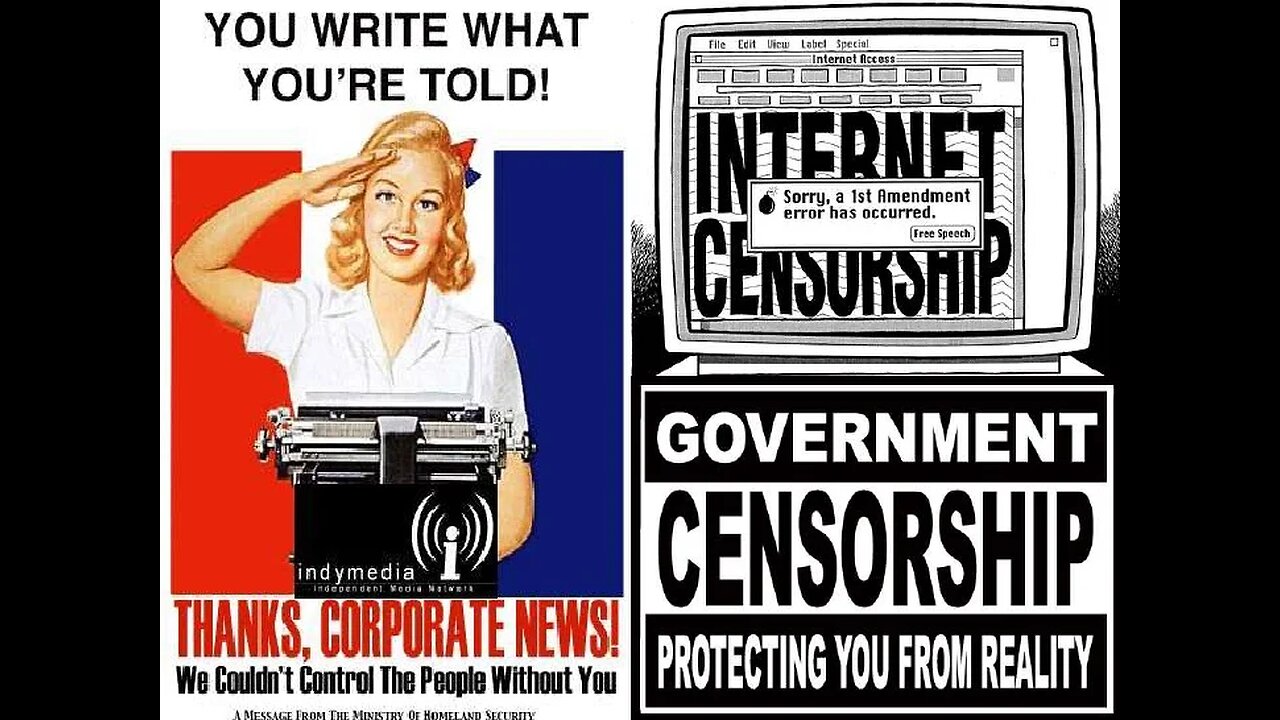
They censure information.
Censorship
Article
Talk
Read
View source
View history
Tools
Appearance hide
Text
Small
Standard
Large
Width
Standard
Wide
Page semi-protected
From Wikipedia, the free encyclopedia
For Wikipedia's policy concerning censorship, see Wikipedia:Wikipedia is not censored
This article contains weasel words: vague phrasing that often accompanies biased or unverifiable information. Such statements should be clarified or removed. (December 2021)
The plaster cast of David at the Victoria and Albert Museum has a detachable plaster fig leaf which is displayed nearby. Legend claims that the fig leaf was created in response to Queen Victoria's shock upon first viewing the statue's nudity and was hung on the figure prior to royal visits, using two strategically placed hooks.[1]
Information science
General aspects
AccessArchitectureBehaviorManagementRetrievalSeekingSocietyKnowledge organizationOntologyPhilosophyScience and technology studiesTaxonomy
Related fields and subfields
BibliometricsCategorizationCensorshipClassificationComputer data storageCultural studiesData modelingInformaticsInformation technologyIntellectual freedomIntellectual propertyLibrary and information scienceMemoryPreservationPrivacyQuantum information science
vte
Part of a series on
Censorship by country
A censorship symbol
Countries
List
See also
Freedom of speech by country
Internet censorship and surveillance by country
vte
Censorship is the suppression of speech, public communication, or other information. This may be done on the basis that such material is considered objectionable, harmful, sensitive, or "inconvenient".[2][3][4] Censorship can be conducted by governments,[5] private institutions,[6] and other controlling bodies.
Governments sometimes engage in censorship.[5] Other groups or institutions may propose and petition for censorship.[6] When an individual such as an author or other creator engages in censorship of their own works or speech, it is referred to as self-censorship. General censorship occurs in a variety of different media, including speech, books, music, films, and other arts, the press, radio, television, and the Internet for a variety of claimed reasons including national security, to control obscenity, pornography, and hate speech, to protect children or other vulnerable groups, to promote or restrict political or religious views, and to prevent slander and libel. Specific rules and regulations regarding censorship vary between legal jurisdictions and/or private organizations.
History
Chinese troops destroyed the statue Goddess of Democracy in Tiananmen Square in 1989, and continue to censor information about those events.[7] This statue, now known as the Victims of Communism Memorial, was recreated by Thomas Marsh in Washington, DC.
Book burning in Chile following the 1973 coup that installed the Pinochet regime
In 399 BC, Greek philosopher, Socrates, while defying attempts by the Athenian state to censor his philosophical teachings, was accused of collateral charges related to the corruption of Athenian youth and sentenced to death by drinking a poison, hemlock.
The details of Socrates's conviction are recorded by Plato as follows. In 399 BC, Socrates went on trial[8] and was subsequently found guilty of both corrupting the minds of the youth of Athens and of impiety (asebeia,[9] "not believing in the gods of the state"),[10] and as a punishment sentenced to death, caused by the drinking of a mixture containing hemlock.[11][12][13]
Socrates' student, Plato, is said to have advocated censorship in his essay on The Republic, which opposed the existence of democracy. In contrast to Plato, Greek playwright Euripides (480–406 BC) defended the true liberty of freeborn men, including the right to speak freely. In 1766, Sweden became the first country to abolish censorship by law.[14]
Rationale and criticism
Censorship has been criticized throughout history for being unfair and hindering progress. In a 1997 essay on Internet censorship, social commentator Michael Landier explains that censorship is counterproductive as it prevents the censored topic from being discussed. Landier expands his argument by claiming that those who impose censorship must consider what they censor to be true, as individuals believing themselves to be correct would welcome the opportunity to disprove those with opposing views.[15]
Censorship is often used to impose moral values on society, as in the censorship of material considered obscene. English novelist E. M. Forster was a staunch opponent of censoring material on the grounds that it was obscene or immoral, raising the issue of moral subjectivity and the constant changing of moral values. When the 1928 novel Lady Chatterley's Lover was put on trial in 1960, Forster wrote:[16]
Lady Chatterley's Lover is a literary work of importance...I do not think that it could be held obscene, but am in a difficulty here, for the reason that I have never been able to follow the legal definition of obscenity. The law tells me that obscenity may deprave and corrupt, but as far as I know, it offers no definition of depravity or corruption.
Proponents have sought to justify it using different rationales for various types of information censored:
Moral censorship is the removal of materials that are obscene or otherwise considered morally questionable. Pornography, for example, is often censored under this rationale, especially child pornography, which is illegal and censored in most jurisdictions in the world.[17][18]
Military censorship is the process of keeping military intelligence and tactics confidential and away from the enemy. This is used to counter espionage.
Political censorship occurs when governments hold back information from their citizens. This is often done to exert control over the populace and prevent free expression that might foment rebellion.
Religious censorship is the means by which any material considered objectionable by a certain religion is removed. This often involves a dominant religion forcing limitations on less prevalent ones. Alternatively, one religion may shun the works of another when they believe the content is not appropriate for their religion.
Corporate censorship is the process by which editors in corporate media outlets intervene to disrupt the publishing of information that portrays their business or business partners in a negative light,[19][20] or intervene to prevent alternate offers from reaching public exposure.[21]
Types
Political
Main article: Political censorship
See also: Eastern Bloc information dissemination, Censorship in Cuba, Censorship in the People's Republic of China, and Censorship in North Korea
State secrets and prevention of attention
The daily newspaper of Wrocław, Polish People's Republic, March 20–21, 1981, with censor intervention on first and last pages – under the headlines "Co się zdarzyło w Bydgoszczy?" (What happened in Bydgoszcz?) and "Pogotowie strajkowe w całym kraju" (Country-wide strike alert). The censor had removed a section regarding the strike alert; hence the workers in the printing house blanked out an official propaganda section. The right-hand page also includes a hand-written confirmation of that decision by the local Solidarity trade union.
In wartime, explicit censorship is carried out with the intent of preventing the release of information that might be useful to an enemy. Typically it involves keeping times or locations secret, or delaying the release of information (e.g., an operational objective) until it is of no possible use to enemy forces. The moral issues here are often seen as somewhat different, as the proponents of this form of censorship argue that the release of tactical information usually presents a greater risk of casualties among one's own forces and could possibly lead to loss of the overall conflict.
During World War I letters written by British soldiers would have to go through censorship. This consisted of officers going through letters with a black marker and crossing out anything which might compromise operational secrecy before the letter was sent.[22] The World War II catchphrase "Loose lips sink ships" was used as a common justification to exercise official wartime censorship and encourage individual restraint when sharing potentially sensitive information.[23]
An example of "sanitization" policies comes from the USSR under Joseph Stalin, where publicly used photographs were often altered to remove people whom Stalin had condemned to execution. Though past photographs may have been remembered or kept, this deliberate and systematic alteration to all of history in the public mind is seen as one of the central themes of Stalinism and totalitarianism.
Censorship is occasionally carried out to aid authorities or to protect an individual, as with some kidnappings when attention and media coverage of the victim can sometimes be seen as unhelpful.[24]
Religion
Main article: Censorship by religion
Portrayal of the burning of William Pynchon's 1650 critique on Puritanical Calvinism in Boston by the Puritan-controlled Massachusetts Bay Colony
Censorship by religion is a form of censorship where freedom of expression is controlled or limited using religious authority or on the basis of the teachings of the religion.[25] This form of censorship has a long history and is practiced in many societies and by many religions. Examples include the Galileo affair, Edict of Compiègne, the Index Librorum Prohibitorum (list of prohibited books) and the condemnation of Salman Rushdie's novel The Satanic Verses by Iranian leader Ayatollah Ruhollah Khomeini. Images of the Islamic figure Muhammad are also regularly censored. In some secular countries, this is sometimes done to prevent hurting religious sentiments.[26]
Educational sources
Historic Russian censorship. Book Notes of my life by N.I. Grech, published in St. Petersburg 1886 by A.S. Suvorin. The censored text was replaced by dots.
The content of school textbooks is often an issue of debate, since their target audiences are young people. The term whitewashing is commonly used to refer to revisionism aimed at glossing over difficult or questionable historical events, or a biased presentation thereof. The reporting of military atrocities in history is extremely controversial, as in the case of the Holocaust (or Holocaust denial), Bombing of Dresden, the Nanking Massacre as found with Japanese history textbook controversies, the Armenian genocide, the Tiananmen Square protests of 1989, and the Winter Soldier Investigation of the Vietnam War.
In the context of secondary school education, the way facts and history are presented greatly influences the interpretation of contemporary thought, opinion and socialization. One argument for censoring the type of information disseminated is based on the inappropriate quality of such material for the younger public. The use of the "inappropriate" distinction is in itself controversial, as it changed heavily. A Ballantine Books version of the book Fahrenheit 451 which is the version used by most school classes[27] contained approximately 75 separate edits, omissions, and changes from the original Bradbury manuscript.
In February 2006, a National Geographic cover was censored by the Nashravaran Journalistic Institute. The offending cover was about the subject of love and a picture of an embracing couple was hidden beneath a white sticker.[28]
Economic induced censorship
Economic induced censorship is a type of censorship enacted by economic markets to favor, and disregard, types of information. Economic induced censorship, is also caused, by market forces which privatize and establish commodification of certain information that is not accessible by the general public, primarily because of the cost associated with commodified information such as academic journals, industry reports and pay to use repositories.[29]
The concept was illustrated as a censorship pyramid[30] that was conceptualized by primarily Julian Assange, along with Andy Müller-Maguhn, Jacob Appelbaum and Jérémie Zimmermann, in the Cypherpunks (book).
Self-censorship
Author Ozzie Zehner self-censored the American edition of his environmental book, Green Illusions,[31] fearing food libel laws.
A person in Putin's Palace has had their face and reflection obscured presumably to prevent retaliation for distributing such photos.
Main article: Self-censorship
Ithyphallic god Min, tumescence obscured
Self-censorship is the act of censoring or classifying one's own discourse. This is done out of fear of, or deference to, the sensibilities or preferences (actual or perceived) of others and without overt pressure from any specific party or institution of authority. Self-censorship is often practiced by film producers, film directors, publishers, news anchors, journalists, musicians, and other kinds of authors including individuals who use social media.[32]
According to a Pew Research Center and the Columbia Journalism Review survey, "About one-quarter of the local and national journalists say they have purposely avoided newsworthy stories, while nearly as many acknowledge they have softened the tone of stories to benefit the interests of their news organizations. Fully four-in-ten (41%) admit they have engaged in either or both of these practices."[33]
Threats to media freedom have shown a significant increase in Europe in recent years, according to a study published in April 2017 by the Council of Europe. This results in a fear of physical or psychological violence, and the ultimate result is self-censorship by journalists.[34]
Copy, picture, and writer approval
Copy approval is the right to read and amend an article, usually an interview, before publication. Many publications refuse to give copy approval but it is increasingly becoming common practice when dealing with publicity anxious celebrities.[35] Picture approval is the right given to an individual to choose which photos will be published and which will not. Robert Redford is well known for insisting upon picture approval.[36] Writer approval is when writers are chosen based on whether they will write flattering articles or not. Hollywood publicist Pat Kingsley is known for banning certain writers who wrote undesirably about one of her clients from interviewing any of her other clients.[citation needed]
Reverse censorship
Flooding the public, often through online social networks, with false or misleading information is sometimes called "reverse censorship". American legal scholar Tim Wu has explained that this type of information control, sometimes by state actors, can "distort or drown out disfavored speech through the creation and dissemination of fake news, the payment of fake commentators, and the deployment of propaganda robots."[37]
Soft censorship
See also: Media manipulation and Independent media § Influences in media systems
Soft, or indirect, censorship is the practice of influencing news coverage by applying financial pressure on media companies that are deemed critical of a government or its policies and rewarding media outlets and individual journalists who are seen as friendly to the government.[38]
By media
[icon]
This section needs expansion with: Television and News Media censorship. You can help by adding to it. (May 2020)
Books
Main article: Book censorship
Nazi book burning in Berlin, May 1933
Book censorship can be enacted at the national or sub-national level, and can carry legal penalties for their infraction. Books may also be challenged at a local, community level. As a result, books can be removed from schools or libraries, although these bans do not typically extend outside of that area.
Films
Main article: Film censorship
Aside from the usual justifications of pornography and obscenity, some films are censored due to changing racial attitudes or political correctness in order to avoid ethnic stereotyping and/or ethnic offense despite its historical or artistic value. One example is the still withdrawn "Censored Eleven" series of animated cartoons, which may have been innocent then, but are "incorrect" now.[39]
Film censorship is carried out by various countries. Film censorship is achieved by censoring the producer or restricting a state citizen. For example, in China the film industry censors LGBT-related films. Filmmakers must resort to finding funds from international investors such as the "Ford Foundations" and or produce through an independent film company.[40]
Music
Main article: Censorship of music
Music censorship has been implemented by states, religions, educational systems, families, retailers and lobbying groups – and in most cases they violate international conventions of human rights.[41]
Maps
Main articles: Censorship of maps and Cartographic censorship
Censorship of maps is often employed for military purposes. For example, the technique was used in former East Germany, especially for the areas near the border to West Germany in order to make attempts of defection more difficult. Censorship of maps is also applied by Google Maps, where certain areas are grayed out or blacked or areas are purposely left outdated with old imagery.[42]
Art
Art is loved and feared because
-
 LIVE
LIVE
The Dan Bongino Show
4 hours agoTrump Is Setting The Old World Order Ablaze (Ep. 2414) - 02/03/2025
161,470 watching -
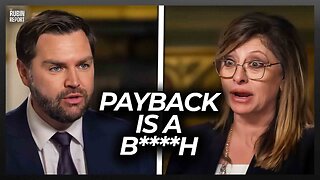 LIVE
LIVE
The Rubin Report
1 hour agoJD Vance Makes Host Go Quiet with This Brutal Warning for These Major Countries
5,162 watching -
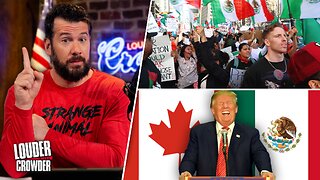 LIVE
LIVE
Steven Crowder
2 hours ago🔴 Why Trump & America Will Dominate the Global Trade War
45,088 watching -
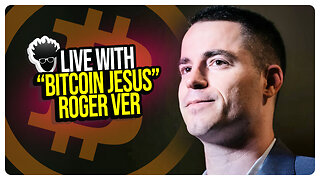 DVR
DVR
vivafrei
14 hours agoLive with "Bitcoin Jesus" Roger Ver - the Indictment, Law-Fare and the War on Crypto
60.6K7 -
 LIVE
LIVE
Bannons War Room
1 year agoWarRoom Live
31,805 watching -
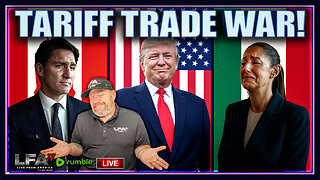 LIVE
LIVE
LFA TV
22 hours agoTARIFF TRADE WAR! | LIVE FROM AMERICA 2.3.25 11am
4,963 watching -
 LIVE
LIVE
Caleb Hammer
1 hour agoProfessional Redditor Treats His Wife Like A Pet | Financial Audit
296 watching -
 36:07
36:07
Rethinking the Dollar
1 hour agoTit-for-Tat Trade Wars: Why Gold Is Still Winning (Trade Wars Hurt Your Money!)
4.19K -
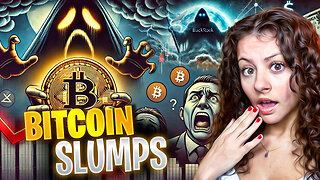 56:02
56:02
Randi Hipper
1 hour agoBITCOIN AT CRITICAL LEVELS AS MARKET CRASHES! LATEST PRICE UPDATE HERE
17.9K1 -
 2:22:37
2:22:37
Matt Kohrs
10 hours agoMARKET CRASH! Trump's Trade War Bloodbath || The MK Show
50.4K6